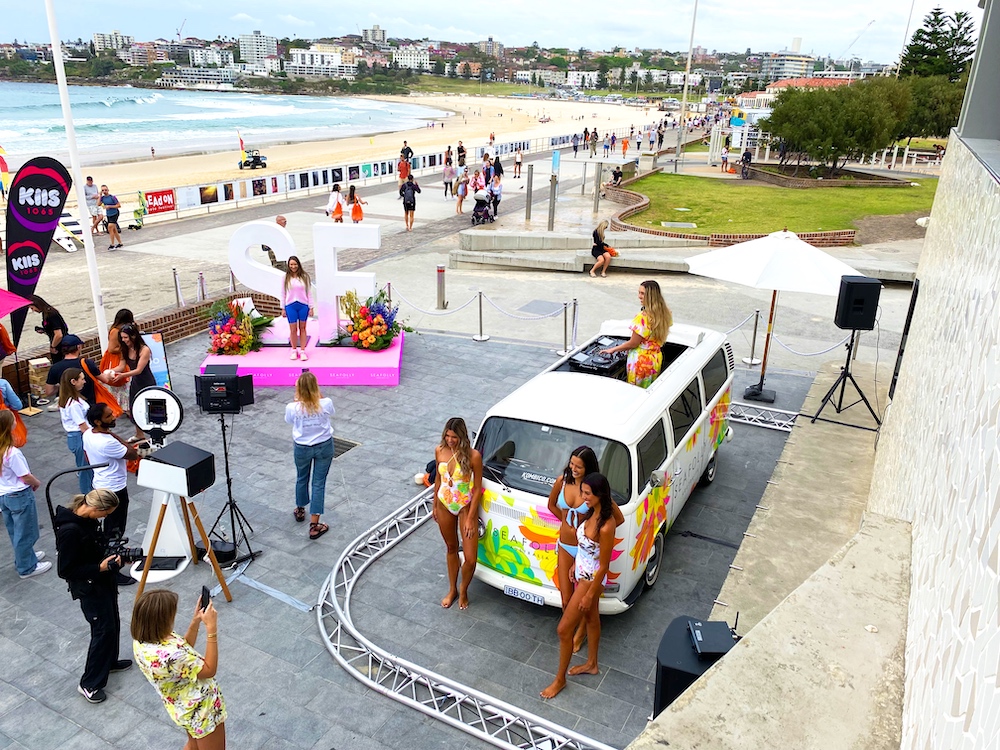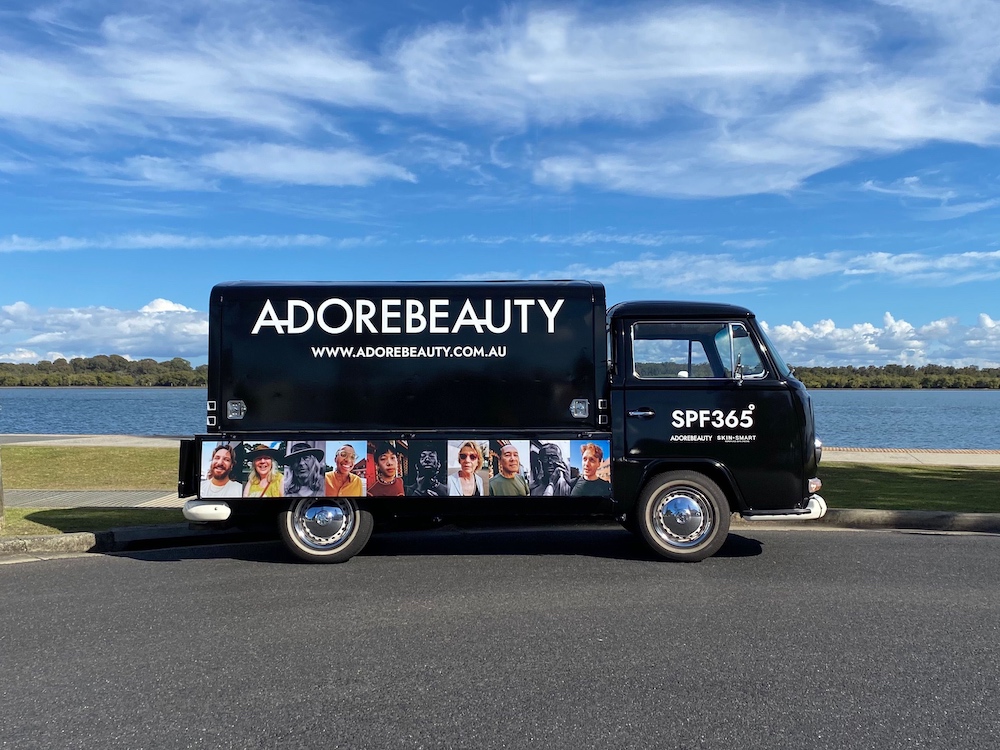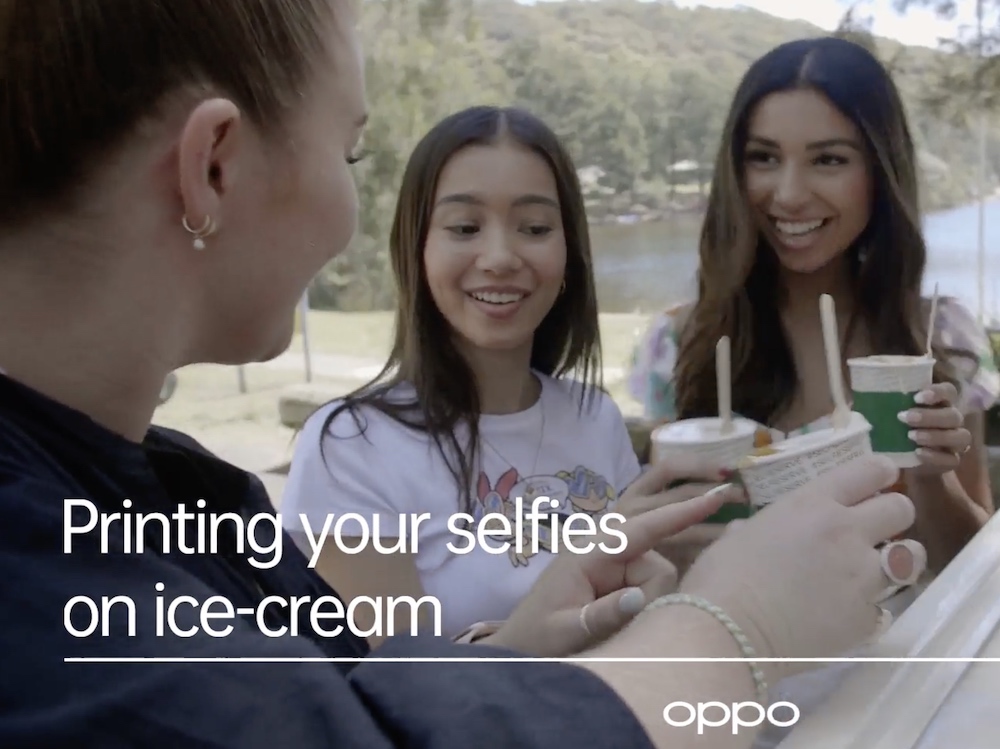Outline
In this evolving marketing world, brand activation is a powerful strategy for captivating audiences, nurturing brand loyalty, and driving tangible outcomes. Brand activation aims to engage consumers through through a unique brand experience that breathe life into a brand with the goal of establishing an emotional connection and enhancing consumer engagement.
But what exactly is brand activation, and why should brands and marketing agencies prioritise it in their campaigns? In this guide we’ll delve into the essence of a brand activation, tactics for crafting successful campaigns and methods for evaluating their effectiveness. Plus, we’ll share some cool brand activation ideas to fuel your creativity for your next marketing campaign.
What is a Brand Activation?
Brand activation is more than a fancy marketing jargon — it’s a dynamic strategy designed to create unforgettable experiences that foster meaningful connections between brands and consumers. It surpasses traditional advertising by actively engaging target audiences through interactive campaigns, events, and experiences. A
ccording to Eventbrite, 73% of millennials agreed that a fear of missing out (FOMO) drives the need to seek new experiences, making brand activation a valuable tool for connecting with the target demographic.
Have you ever wondered how certain brands seem to have a legion of loyal customers? One way of boosting brand recognition and cultivate customer loyalty is through successful experiential campaigns. These initiatives often involve immersive experiences that grab consumer’s attention and sets brands apart from competitors. By creating moments that deeply resonate with audiences, brand activation efforts can make a lasting impact to maximise consumer engagement. One of the primary goals of creative activation campaigns is to enhance brand visibility among the target audience, ensuring that the brand remains top-of-mind.
What is a Marketing Activation?
Marketing activation, also known as brand activation, involves the marketing process of bringing a brand to life through engaging experiences and interactions with consumers. It encompasses a wide range of activities, from experiential marketing events and influencer partnerships to social media campaigns and product sampling initiatives. The goal of marketing activation is to build brand awareness, foster brand loyalty, and drive consumer engagement.
Forbes reports that 93% of consumers say that live events have a larger influence on them compared to TV advertising. This statistic highlights the role of brand activation as a strategic tool for enhancing brand’s reputation and spurring business growth.

Why is Brand Activation Important?
Brand activation plays a crucial role in generating brand awareness and is important for various reasons.
Firstly, it helps brands generate brand awareness. This can lead to an increase in market share by creating memorable experiences that capture the attention of consumers and differentiate them from competitors.
Additionally, brand activation fosters brand loyalty by creating an emotional connection between brands and consumers.
According to Sprout Social, 84% of consumers say that having an emotional emotional connection to the brand makes them more likely to buy the products.
Furthermore, these campaigns can drive consumer engagement and increase brand loyalty. By creating immersive experiences that resonate with audiences in a meaningful way brands can forge meaningful connections with consumers and strengthen their brand identity. This can lead to increased customer retention and lifetime value, ultimately driving business growth and profitability.
8 Types of Brand Activations
Experiential Events
These are immersive experiences provide consumers with experiences directly involving the brand. Examples include pop-up stores, in store promotions, and engaging installations. Brand activation events are integral to the marketing campaigns strategy as they showcase a company’s values while engaging with consumers meaningfully.
Influencer Collaboration
Partnering with influencers allows brands to utilise their credibility and reach to endorse products or services to their followers. Influencer marketing is a key strategy in brand activation strategies as it leverages the influence of social media personalities to enhance brand visibility and customer engagement.
Social Media Campaigns
These involve creating engaging content on social media platforms to increase brand visibility, drive engagement, and encourage users to share their own content.
Product Sampling
Offering product samples allows consumers to try out products firsthand which can raise brand recognition and build customer loyalty. Offering samples is a popular brand activation idea that effectively engages consumers and introduces them to the brand.
Sponsorship Activations
Brands can sponsor events or activities that align with their values and target audience to increase visibility and brand association.
Cause Marketing
This involves aligning with a social or environmental cause to demonstrate corporate social responsibility and connect with socially-conscious consumers.
Content Marketing
Creating valuable content such as blogs, videos, or podcasts that educates, entertains, or inspires consumers can strengthen brand identity and engagement.
Interactive Marketing
Using interactive technologies such as augmented reality (AR) or virtual reality (VR) to create immersive brand experiences that captivate and engage consumers.

6 Strategies for Creating a Successful Brand Activation Campaign
Creating a successful brand activation strategy requires careful planning, creativity, attention to detail, and selecting the right brand activation ideas. Here are some sights for shaping a compelling brand activation strategy:
Selecting brand activation concepts that resonates with the brand’s values and goals is vital to ensure each campaign connects with the intended audience and transforms customers into loyal brand supporters.
1. Understand Your Target Audience
Before mapping out your brand activation, gaining an understanding of your target audience and their preference is key. Conducting market research helps in uncovering insights into their likes, behaviours and demographics.
- Relevance: Tailoring your activation to match the interests, preferences and requirements of your audience stems from understanding them.
Personalization: Knowing your audience enables you to create personalized experiences that directly appeal to their interests and motivations.
Targeted Communication: Understanding your audience allows you to create messages that address their challenges, desires and aspirations.
Optimised Platforms: Whether it’s through social media, email marketing, influencer partnerships, or experiential events, choosing the right channels ensures that your activation reaches the right people at the right moment and place.
Feedback and Insights: By listening to your audience and understanding their reactions, preferences, and feedback, you can continuously refine and optimise your brand activation efforts.
2. Select the Right Venue
- Target Audience Reach: The location should be easily accessible to your target audience. Consider demographics, behaviors, and preferences when choosing a location to ensure maximum reach and engagement.
Relevance: For instance if you’re showcasing adventure equipment holding the activation at a park or outdoor exhibition would be more fitting than a shopping center.
Visibility: Opt for a spot with pedestrian traffic or visibility to amplify exposure for your brand. Areas with high foot traffic increase the chances of connecting with an audience and drawing attention to your activation.
Brand Image: The venue should mirror the desired brand image and principles. A luxury brand might choose a venue or exclusive event space whereas a lifestyle brand could lean towards an urban setting or popular event location.
Permits and Regulations: Confirm that the selected location permits activations and the necessary permits and venue applications have been completed.. Failing to secure permissions could lead to complications or disruptions during the activation.
Ambiance and Atmosphere: Take into consideration the ambiance and setting of the venue and how it will enrich participants overall experience. A beautiful outdoor setting for instance, can set the stage for activities.
Social Sharing Opportunities: Choose a location that provides opportunities for social sharing and user-generated content. Incorporating visually appealing elements or interactive features can encourage attendees to share their experience on social media, amplifying the reach of your activation.
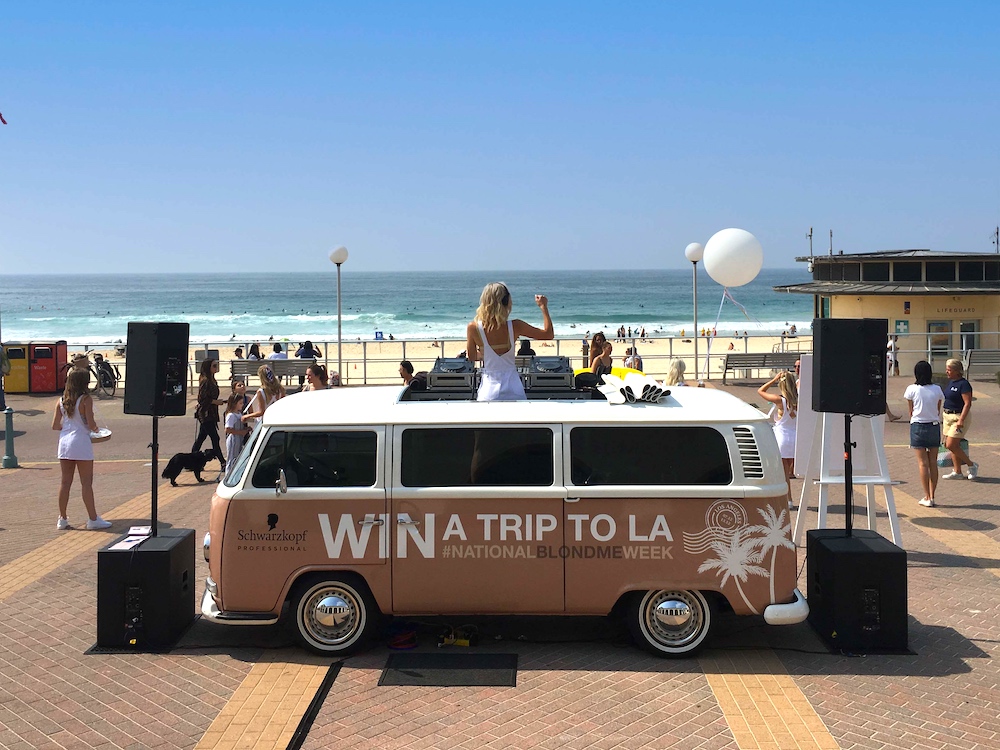
3. Establish Clear Objectives
Do you have clear objectives for your brand activation ? Whether it’s to increase brand awareness, boost sales, or generate leads. Setting specific, measurable goals will help guide your strategy and evaluate its success.
4. Select Appropriate Brand Activation Ideas
It’s important to select activation ideas that resonate with your target audience and align with your brand’s values and objectives. Whether it’s hosting an exclusive event, creating interactive events or launching a pop up store, choose activities that will capture the attention of your audience and leave a lasting impression.
Consider collaborating with a non competing brand that shares a similar audience to extend your reach and engage a broader audience, much like the successful partnerships between The ICONIC and Ole Henriksen or Adore Beauty and the Skin Smart Australia, leveraging the power of combined audiences for mutual benefit.
5. Craft an Interactive Brand Experience
Develop an experience that encourages involvement and engagement from consumers.
When engaging with your audience strive to create lasting memories through interactive set ups, live demos or captivating narratives.
Interactive Features: Incorporate interactive elements that encourage participants to actively engage with the activation. This could include touchscreens, interactive displays, motion sensors, or gamified experiences that invite participants to interact with the brand in fun and memorable ways.
Immersive Settings: Create immersive environments that transport participants to another world or bring the brand’s story to life. These may involve lighting, sound, scent, and other sensory elements to create a multi-sensory experience that captivates participants and draws them into the brand’s world.
Personalisation: Personalise the experience to make participants feel special and valued. This could be personalised greetings, customised products or services, or interactive elements that adapt to the individual preferences and behaviours of participants.
Surprise and Delight: Infuse elements of surprise and delight that catch participants off guard and leave them feeling excited and intrigued. This could include unexpected twists, hidden surprises, or exclusive offers or experiences that are only revealed to participants who engage with the activation.
Storytelling: Harness storytelling to weave a narrative thread that leads participants through the activation while fostering a connection with the brand. This could involve using characters, plot twists, and dramatic tension to create a memorable and engaging experience that resonates with participants long after the activation is over.
Social Sharing Opportunities: Provide opportunities for participants to share their experience on social media, amplifying the reach of the activation and generating buzz around the brand. This could include creating photogenic moments, selfie stations, or shareable content that participants are encouraged to post on their social networks.
Hands-On Activities: Engage participants through hands on activities that allow them to actively take part in the activation while having fun and building brand awareness. This may involve product demonstrations, do it yourself workshops or interactive challenges that encourage a two way dialogue and user generated content campaigns.
- Feedback and Interaction: Create a sense of involvement by seeking feedback and interaction from participants during the activation. By asking for their thoughts, opinions and experiences with the brand in time you can make them feel like valued contributors than mere spectators.
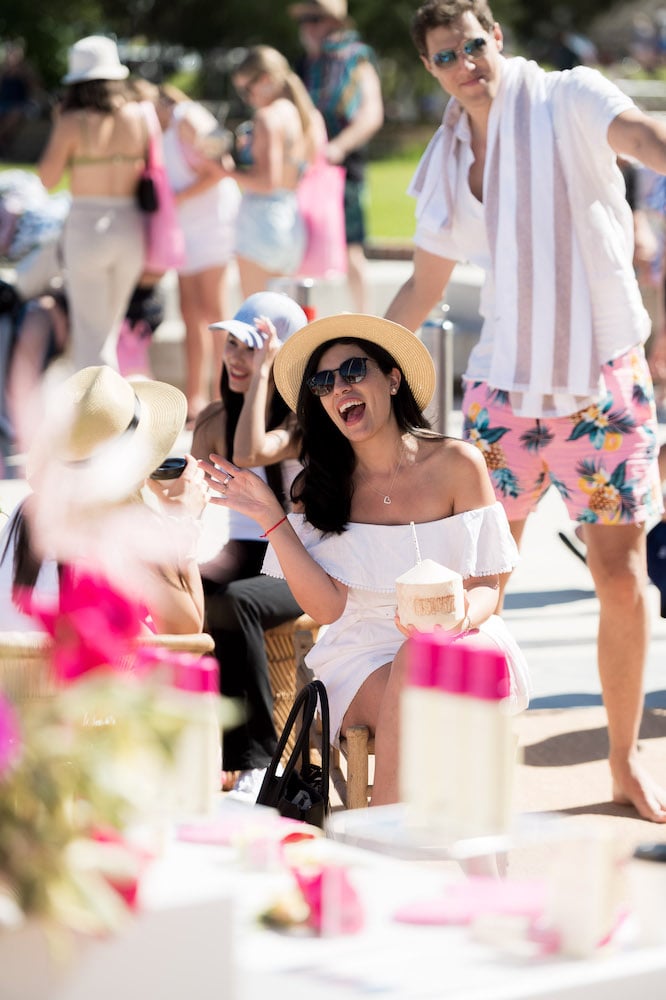
6. Leverage Technology
Embrace technology as a tool to enhance your brand activation strategy. Whether it’s through virtual reality experiences, augmented reality apps, or social media integrations, technology can help create immersive experiences that captivate audiences and drive engagement.
Virtual Reality (VR) Experiences: Incorporating VR technology allows brands to create immersive experiences that transport participants to virtual worlds related to the brand. For instance a travel company could utilize VR to replicate a vacation spot enabling participants to immerse themselves in the sights and sounds of destinations.
Augmented Reality (AR) Apps: AR technology superimposes content onto the world offering interactive experiences for users. Brands have the opportunity to develop AR apps that enable users to visualise products within their surroundings try on clothing or accessories or reveal hidden content by scanning objects using their smartphones.
Interactive Installations: Technology driven interactive installations participants to interact with the brand in unforgettable ways. For example a beverage company could design a motion activated vending machine that dispenses samples when participants execute specified actions or gestures.
Social Media Integration: Integrating social media into allows participants to share their experiences with their social networks, amplifying the reach of the activation. Brands can create photo booths, selfie stations, or interactive displays that encourage participants to capture and share their experiences on platforms like Instagram, Facebook, and Twitter.
Live Streaming and Virtual Events: Integrating media into empowers participants to share their experiences with their circles extending the impact of the activation. Brands can introduce photo booths, selfie stations or interactive showcases that inspire participants to capture and share their experiences across platforms, like Instagram, Facebook and Twitter.
Interactive Games and Challenges: To enhance engagement and foster competition, brands can develop games or challenges that leverage technology. For instance a fitness brand could introduce an app for a fitness challenge that tracks progress and rewards participants with prizes or discounts upon reaching specific milestones.
Data Collection and Analytics: Utilising technology for data collection and analytics during brand activations offers insights, into consumer behavior, preferences and demographics. This data can then be leveraged by brands to optimise activations and tailor marketing strategies to better resonate with their target audience.
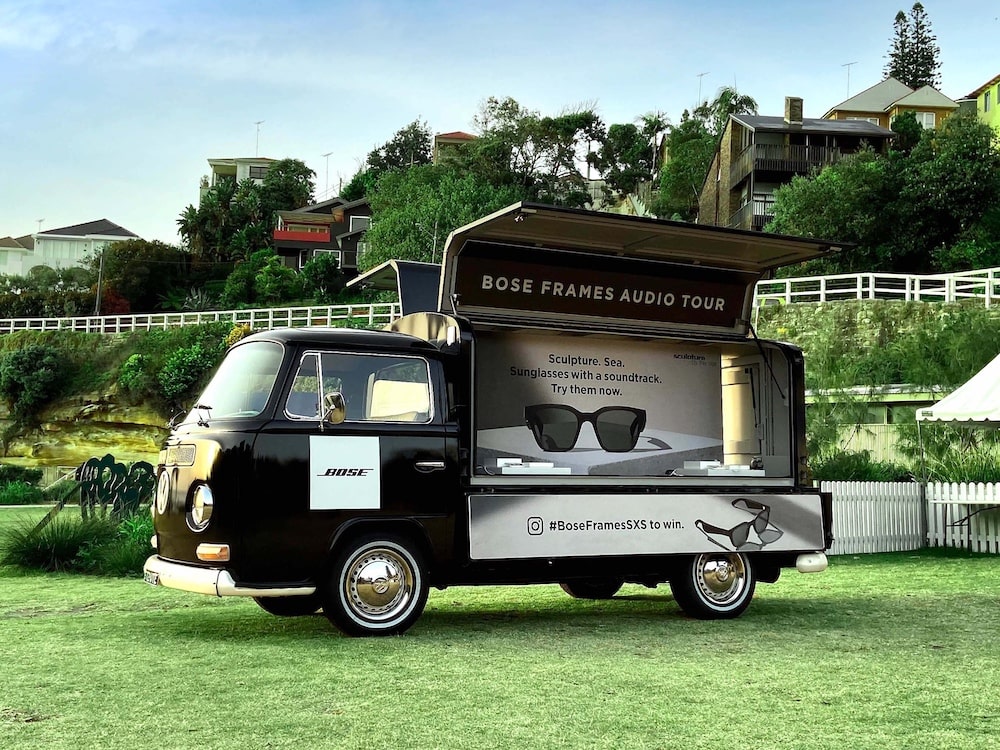
How to Measure Brand Activation Campaigns
Measuring the success of brand activation campaigns is crucial for evaluating their impact and improving future strategies. Below are some key metrics for evaluating the success of brand activation efforts:
- Engagement Metrics: Keep an eye on metrics like event attendance, social media interactions and website traffic to understand how involved your audience is with your brand activation campaign.
- Brand Sentiment: Use sentiment analysis to gauge how consumers view your brand both before and after the activation. Positive feedback suggests that your campaign has resonated well with your target audience.
- Sales Performance: Analyse sales data to measure how effectively your brand activation campaign has influenced purchasing behavior and revenue generation. A rise in sales post activation indicates a campaign that motivates consumer engagement.
- Social Sharing: Evaluate the spread and popularity of user generated content related to your brand activation campaign, on platforms. High levels of sharing demonstrate that your campaign has captured audience interest and encouraged them to share their experiences with others.
7 Examples of Cool Marketing Activations
Let’s explore some brand activation examples from brands to spark ideas for your upcoming campaign and demonstrate how it can provide distinctive brand experiences for your target audience.
1. Bumble
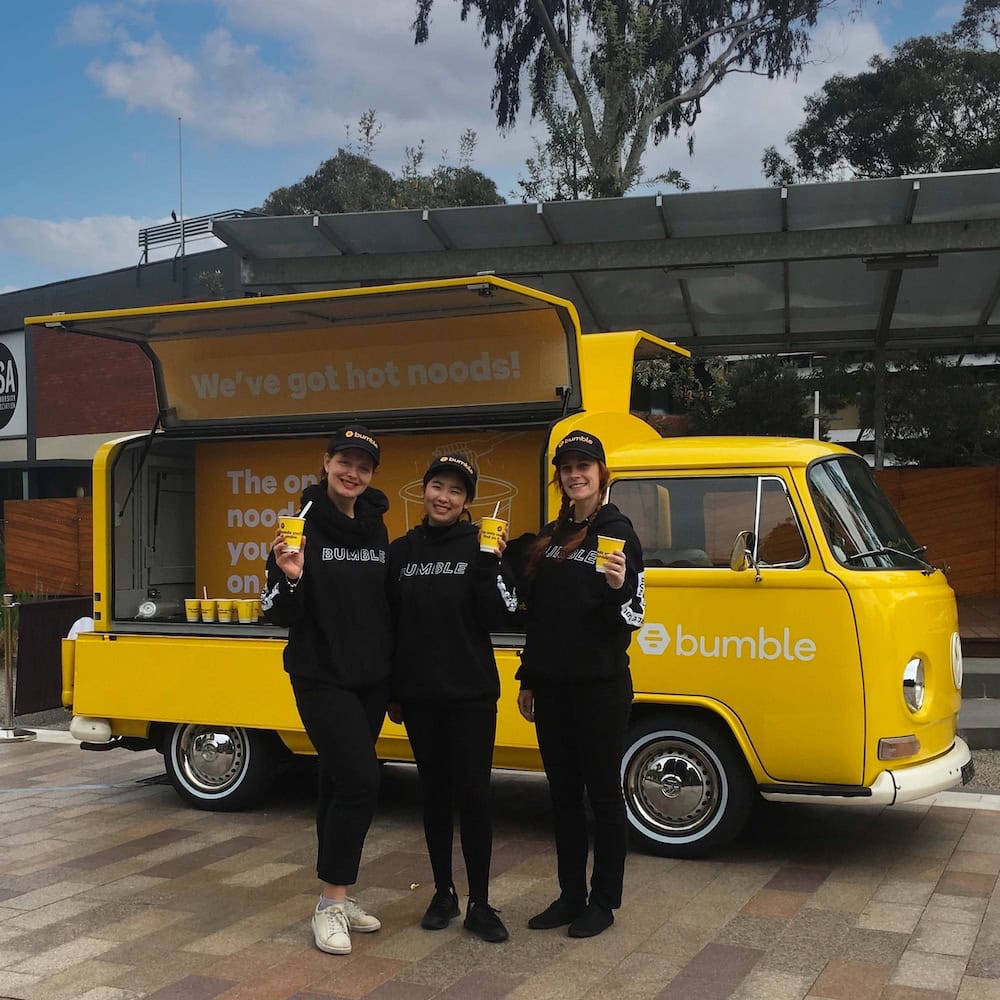
Bumble, a popular matchmaker of the digital age heated things up with a cheeky brand activation. They rolled out their “We’ve got hot noods” campaign in a retro Kombi van, hitting up universities with free pot noodles for students who signed up to their app. This bold experiential campaign cooked up a storm, increasing their customer base and stirring up a frenzy around university campuses around Australia
2. Adore Beauty
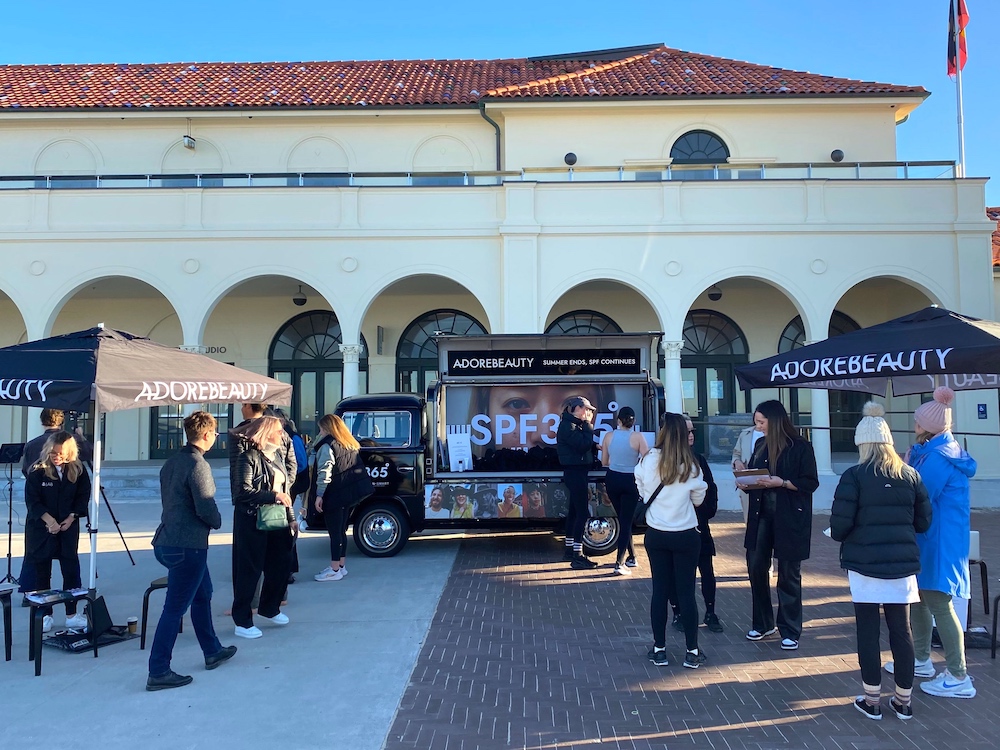
Adore Beauty teamed up with Skin Smart Australia for #SPF365, a groundbreaking initiative promoting daily sunscreen use.
The mobile road tour offered free skin checks by skilled dermoscopists, empowering participants with personalised insights and free product samples of the Ab Lab suncreen.
Covering iconic NSW coastal spots, this creative marketing activation built lasting community connections.
3. Berocca
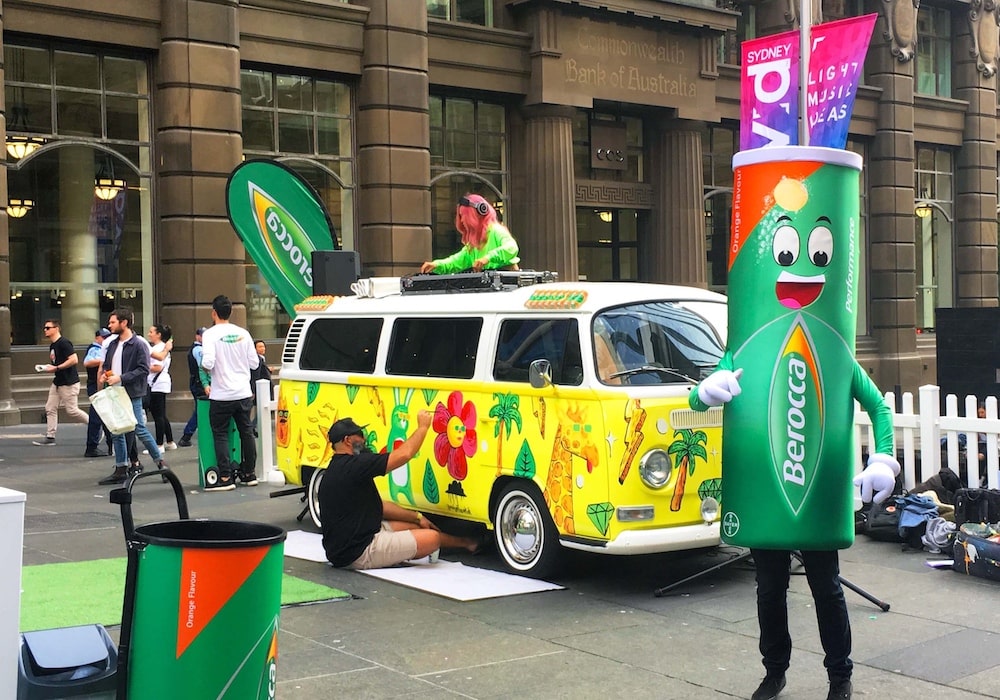
Berocca’s “50 Years of Energy” brand activation was all about the elements of suprise & delight.
Imaging strolling through Martin Place on your lunch break and you see DJ Tigerlily rocking beats from a groovy Kombi DJ van, while street artist extraordinaire ‘Mulga’ splashes vibrant colors all over it.
Berocca’s cool activation was the perfect fusion of product sampling, live music and art. Mulga’s tropical artwork and Tigerlily’s tunes turning heads was a feast for the senses and spurred a whole lot of social buzz.
4. The ICONIC x Ole Henriksen
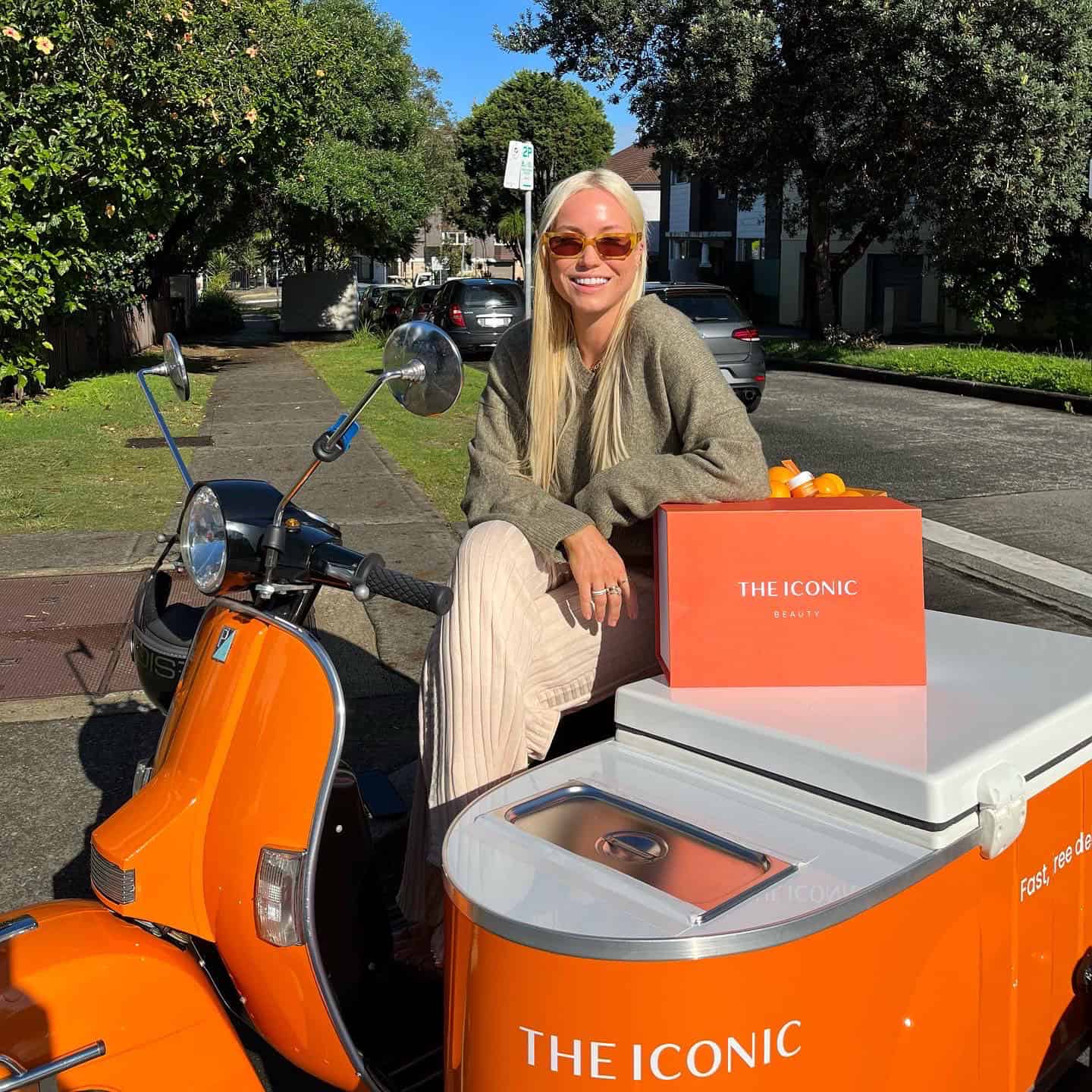
THE ICONIC and Ole Henriksen joined forces for a head turning brand activation campaign, powered by influencer marketing. They cleverly deployed custom-branded gelato carts zipping around Sydney, delivering Ole Henriksen’s goodies to influencers, igniting a social media frenzy.
Loaded with products and treats, the eye-catching branded scooters made waves as brand ambassadors hit key locations, generating heaps of shareable content. The result? A smashing success! Influencers had a blast, sharing their experiences far and wide, giving both companies a boost in brand awareness.
5. Apple TV+
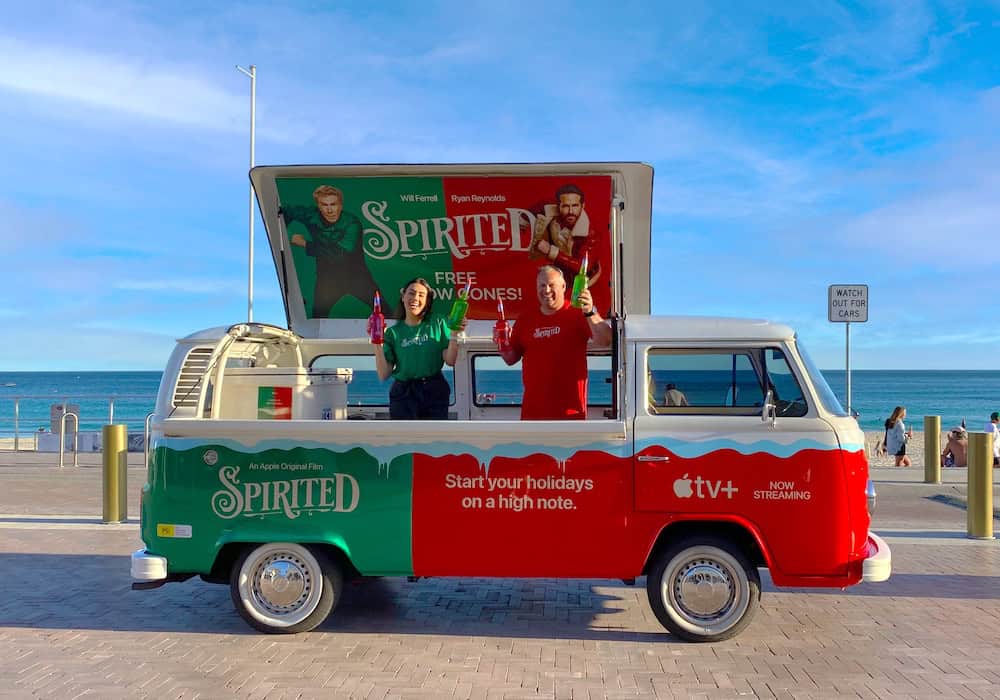
“Spirited”, the Apple TV+ movie sensation, took Out of Home Advertising to new heights with a magical pop up activation event at Bondi Beach. Imagine free Snow Cones from a custom Kombi Van, live Christmas performances, and a movie screening right on the sands!
This modern take on Dickens’ classic captivated audiences of all ages. By merging out-of-home media with experiential magic, brands can reach unprecedented audiences.
6. OPPO
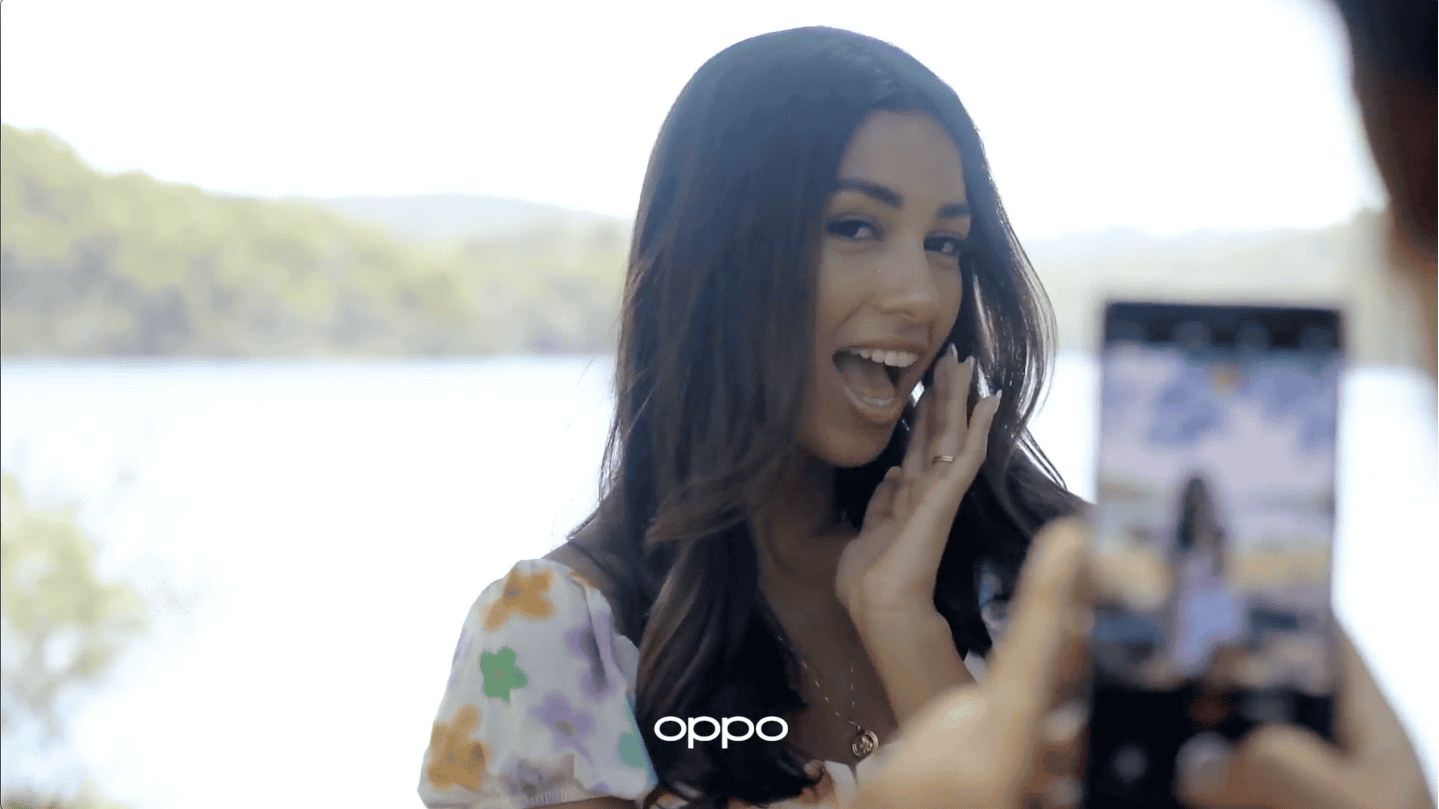
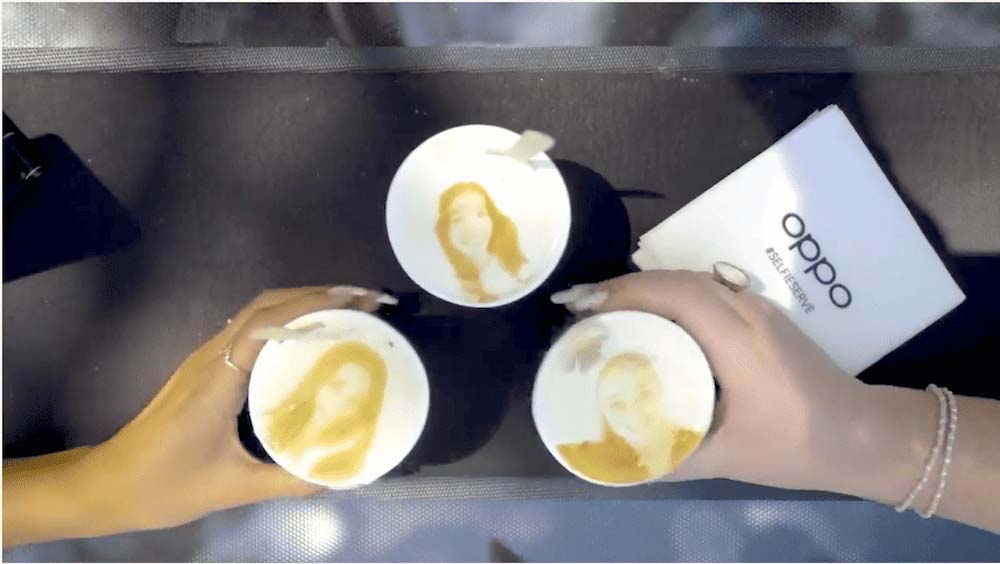
OPPO took the concept of selfies to the next level.
Their creative activation involved an ice cream van on wheels, allowing participants to take selfies and have the images printed on their ice creams. OPPO’s personalised brand experience and innovative use of technology not only provided a unique interactive element, but also encouraged social media sharing.
The campaign was highly successful, resulting in wide spread user-generated content and further extending the brand’s reach.
7. V Energy
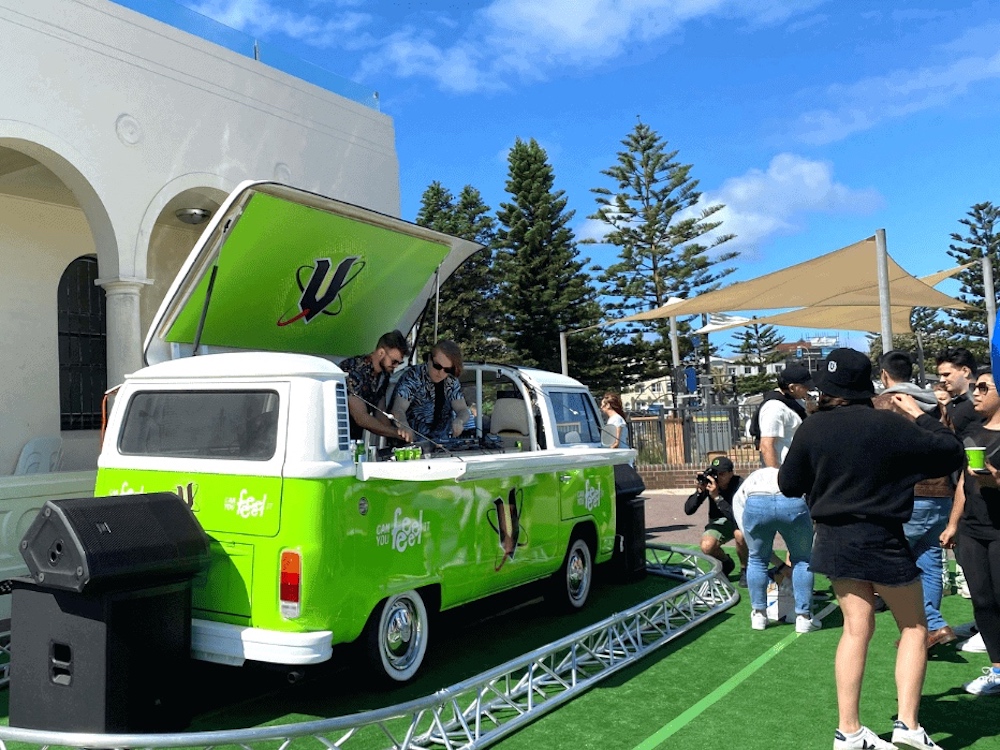
What’s better than an impromptu beach bash under the sun?
V Energy took summer activations to new heights with a pop up beach party at Bondi.
Their custom-branded Kombi DJ Van, Mashd N Kutcher’s epic performance and free samples of V Energy created a vibrant crowd resulting in an electrifying experience.
Influencer buzz soared as happy fans shared their fun-filled moments on social media.
Conclusion
Engaging consumers through creative brand activations is a marketing strategy that not fosters brand loyalty but also yields concrete results. Brands and marketing agencies can boost brand awareness, strengthen loyalty and engage customers by creating experiences that strike a chord with audiences on a deeper level.
Through careful planning, creativity and an eye for detail, brands can harness the potential of brand activation to differentiate themselves from competitors.
